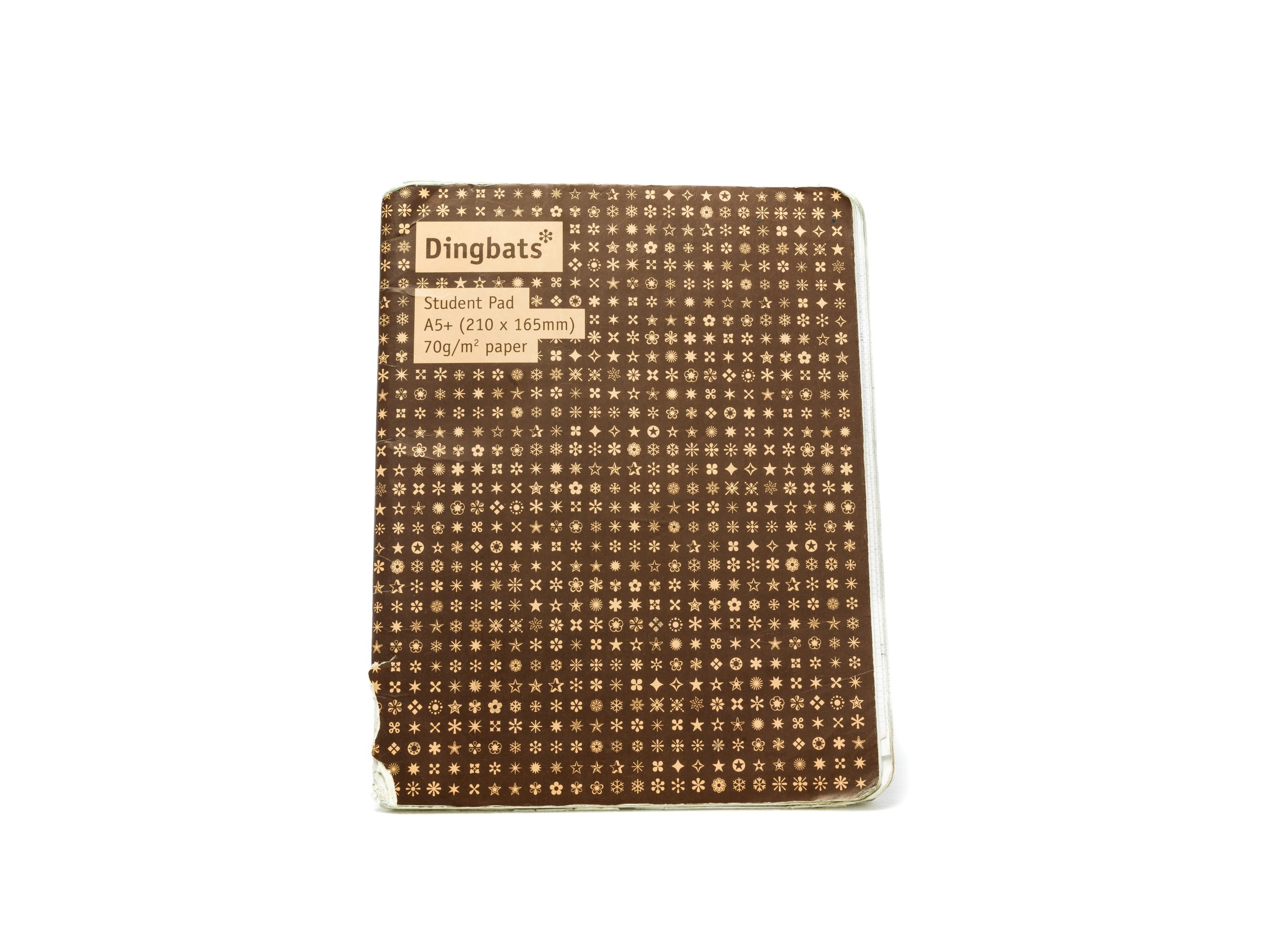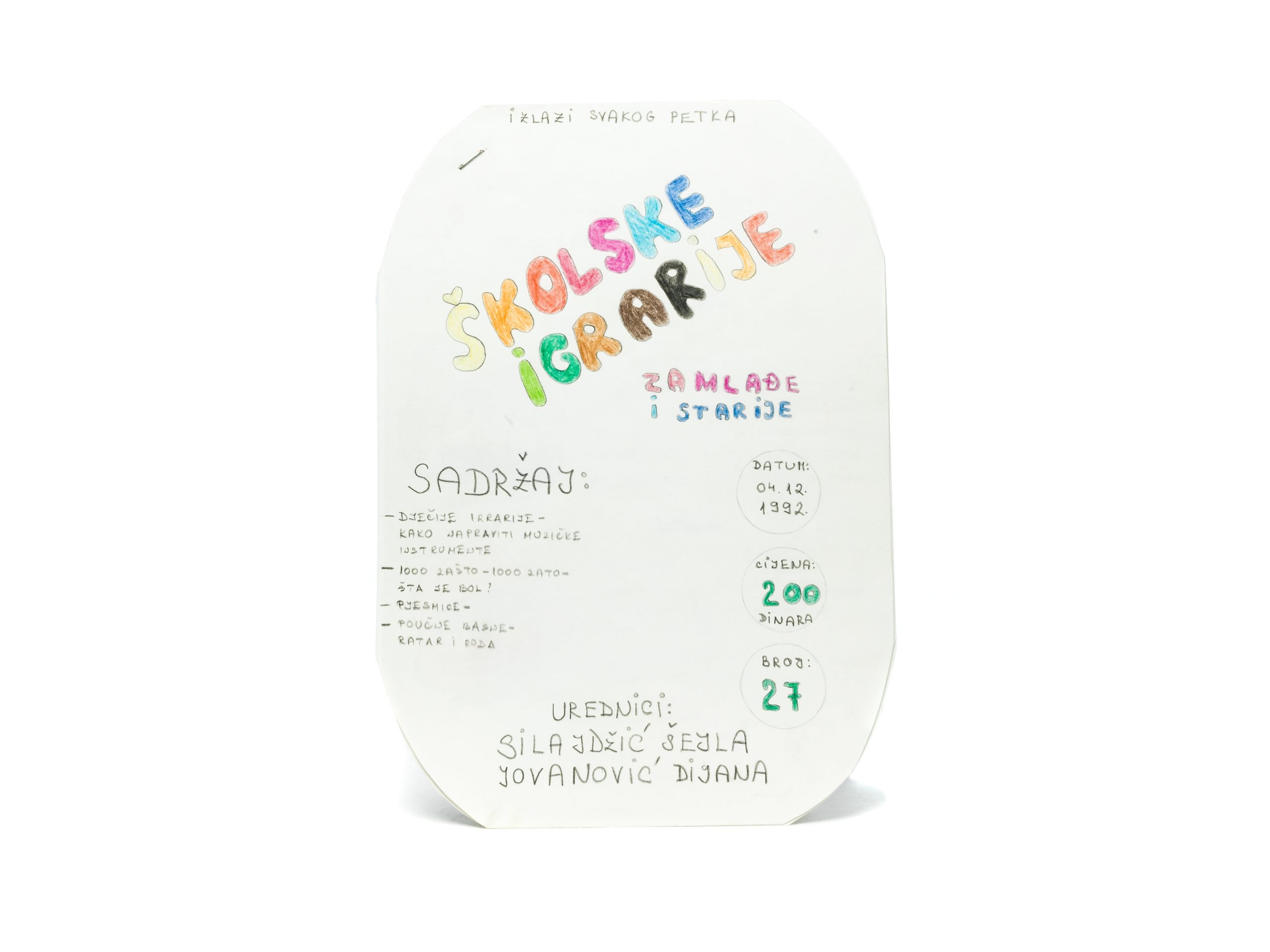On World Teachers’ Day, October 5, we celebrate the vital role that teachers play in the lives of children, especially during times of conflict and crisis. While schools are places of learning, during war and conflict they become much more: a safe haven, a source of stability, and a place where children can rediscover a sense of normalcy amid the chaos. Through their dedication and care, teachers provide not only academic support but also emotional comfort, helping children cope with the trauma they experience.
The War Childhood Museum’s collection features stories that highlight the profound impact teachers have had on children’s lives during challenging times. Explore some of these stories below.
Teacher Ajka
“I was twelve years old when the war began, and I became a refugee. We moved to a new city and I started at a new, improvised school, set up in the basement of a house. I didn’t know anyone in my class. Then came our math teacher, Ajka Mujić—always smiling, cheerful, and full of warmth. Her support inspired me to suddenly fall in love with math, and I began practicing problems like never before or since. Ajka was cherished by all her students, especially by those of us for whom she was the homeroom teacher. She did everything she could to encourage us, entertain us, and make that dreadful period easier. She organized math competitions and made sure to provide nice prizes for the winners—I still remember the real cake and sneakers I won for first place at both the school and municipal competitions (…)”
Mersiha, b. 1980, Bosnia-Herzegovina
Notebook
“I bought this notebook a year and a half ago. I used it for math. I kept it because the teacher was really good, and she loved me a lot. I liked her because she respected us as students and played with us during breaks. She made math easy for us, and I started to love that subject. Everything I learned is in this notebook. I kept it in my closet with my clothes. When we left our house in the Shatila refugee camp, I took it with me (…)”
Mahmoud Mouhamad, b. 2007, Syria
Ballet 1994
“When I enrolled in ballet, of course I wanted to stand on my tiptoes. I don’t know how I managed to wait until I was ten years old for my first pointe shoes! I got them from the theatre, just like all the other ballerinas in my class. Everyone got the ‘real’ pink pointe shoes except for me. I got the white ones, and it made me sad. And jealous. Then my teacher explained to me what kind of pointe shoes they were. She told me that they were Sarajevo pointe shoes, produced in our city until the war started. The ballet students who practiced in them would become prima ballerinas of the Sarajevo National Theatre. These pointe shoes would never be made again.I didn’t become a prima ballerina of the Sarajevo National Theatre. Life took me in a different direction, but my great love for ballet lived on. My Sarajevo pointe shoes remain in a special place.”
Mela, b. 1984, Bosnia-Herzegovina
Teddy Bear
“Mom bought me this teddy bear when I was in the hospital in 2014. I spent two-and-a-half months there. I found a fuse from a grenade on the ground. It exploded, and I lost two fingers on my right hand. Mom told me that if I slept with this teddy bear, it would protect me, and I believed her. Everything would be alright. When there was gunfire, I hugged it. My sofa was near the wall, and I would just press closer into the wall.After I lost my fingers, I didn’t leave my house at all. I was afraid. Well, I went to school, but after school I always stayed at home. Then Vanka and Dimon started coming over, and I gradually began going out. But I was still afraid to walk around with a plaster cast. At school, at first, I just sat there during classes. Then, I started to write and draw with my left hand, and it was fine. It was extremely uncomfortable the first time, but now it’s like I’ve always been left-handed. The teacher asked whether I used to be able to write with both of my hands, and I said, “No, just with the right hand.” He said that I wrote better with my left hand than I used to write with my right one! There’s also a projectile sticking out of Valik’s vegetable patch. It’s from a rocket launcher or something. He wants to take it apart. He says, “I’ll dig it out.” I say, “Go ahead. I also want to dig it out.” To hell with it.”
Oleksiy, b. 2003, Ukraine
Teachers from the Other Side of the Desk
“The first grenades that began falling on the city marked the end of the school year. The entryway and basement became our entire world. The two of us were best friends, and we also happened to be among the oldest girls in the building. We decided to organize a school and daycare for our younger friends. We lined desks up in the entryway and taped drawings and a map to the wall. We even devised a curriculum. We decorated a large notebook to look just like a ‘real’ teaching planner. Every day, children would come to class. We held class as well as recess. We taught the younger children to read and write. We also taught them science and social studies, mathematics… We administered tests and written assignments, taking down the grades in our planner in red pencil. We made magazines with riddles, math puzzles, and rhymes. This lasted until an official school was organized, and then we, the ‘teachers’, went back to our seats, too!”
Šejla, b. 1977, Bosnia-Herzegovina
These stories remind us of the profound and lasting impact teachers have on children during times of conflict. They are more than educators; they are mentors, role models, sources of strength, and protective factors. On World Teachers’ Day, we honor all the teachers who have gone above and beyond, offering not just lessons but hope, safety, and a sense of normalcy to children whose lives have been upended by war.








